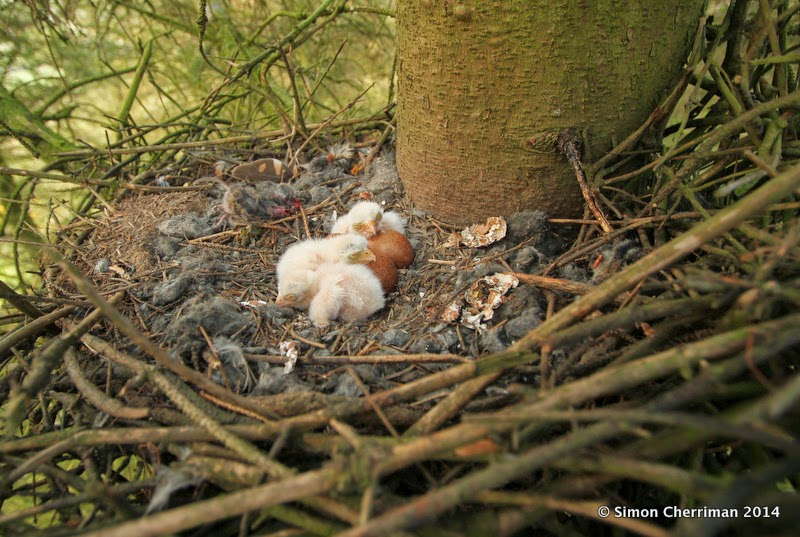You might've read my last blog post about how I was welcomed to Scotland by a female Mallard and her ducklings within hours of landing. I was so happy about this experience and the friendliness of the locals near the
Staging Post pub, that I decided to stay in this area longer. Luckily the pub had a spare room for a very good price, so I booked a few nights here and set myself up for more exploring. With the local wildlife being the target, of course!
 |
| "Life will always find a way." |
What happened to the Mallard family after their safe return to the 'burn' had played on my mind since Sunday, so I decided to follow the path they would've taken downstream, and follow Bucks Burn to where it meets the River Don. Dropping over a small embankment had me right next to the water, and I found plenty of stepping stones and sections of rock wall that allowed me to carry on downstream. The first thing I noticed was how awfully polluted this waterway was - a classic example of 'out of sight, out of mind' when it comes to humanity's lack of realisation of their impacts to local surroundings. People seem to forget that everything we put onto the street ends up in our waterways, and ultimately this feeds back to us through the cycle of life (drinking water and fish stocks, for example). The thing I always notice about these situations, though, is how nature has an amazing ability to recolonise, to continue, and how some creatures have the ability to capitalise on those quiet, out of the way places. At the first given opportunity, plants set seed among rocks and corrugated iron alike, and although we humans recognise what is 'ours' and what is 'nature's', many other organisms don't.


Considering this was such a humanised setting, I didn't expect to come across the unique and wonderful animal which appeared next. After only a few more metres walking downstream, I disturbed a small passerine bird from among the rocks. Closer inspection through binoculars revealed it was a Dipper (
Cinclus cinclus), a small songbird quite at home among the slippery pebbles and gushing rapids of freshwater streams across Great Britain. Here are a couple of distant photos of an adult Dipper - one minute he's there, the next he's gone! I was amazed to observe this bird and notice how quickly and efficiently it dips below the surface of the water, grabs prey (which includes aquatic insects and their larvae), then resurfaces, all in the blink of an eye!
 |
| Now you see him... |
 |
| ...now you don't! The Dipper lives up to his name. |
I was thrilled to have seen a Dipper and had the chance to observe its behaviour, and soon afterwards another one appeared! This bird was a drab grey in colour and was clearly a juvenile, so it was pleasing to know the species was also breeding along the burn!
A little further downstream I hit a dead end. Construction work blocked my way and Bucks Burn promptly diverted below ground into a culvert. It was time to leave the water behind and climb the embankment. I passed the remnants of an old tree-house, presumably built by local children, but sadly not occupied for many years. Is this a sign of a decreasing amount of children engaging with their environment through outdoor play?
I carried on walking away from the burn, and it was then I noticed what a beautiful valley I'd just been in, and how looking down on it gave a perfect view of the trees lining the burn, and emphasised how marvelous a setting this was. The blossoms of Bluebells and a few other plants I don't know the name of also were a reminder of how wonderful this time of year is.
If you recognise either of the two unnamed plants in flower, please comment below.
 |
| Carpets of Bluebells are a sure sign of spring. |
 |
| From a distance, Cherry Blossom is like snow decorating the canopy of the trees. |
 |
| Despite being a weed, Golden Chain (Laburnum sp.) still creates a vibrant scene. |
 |
| The tall trees lining Bucks Burn, with the construction site visible in the background. |
























































